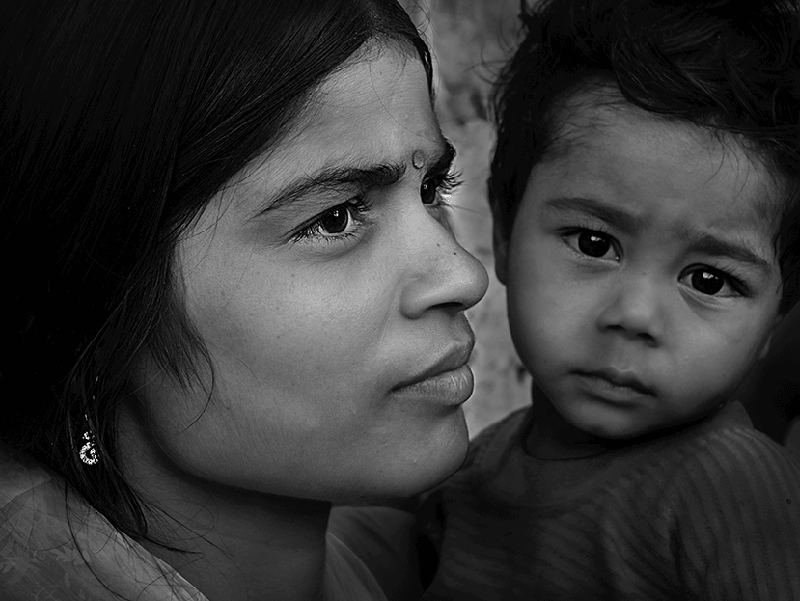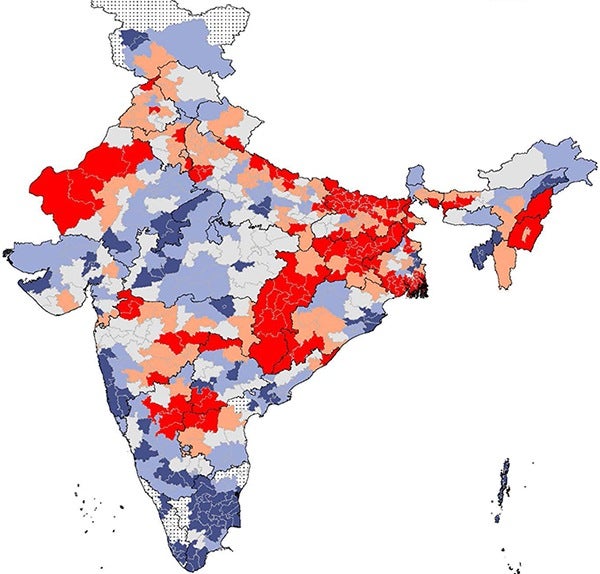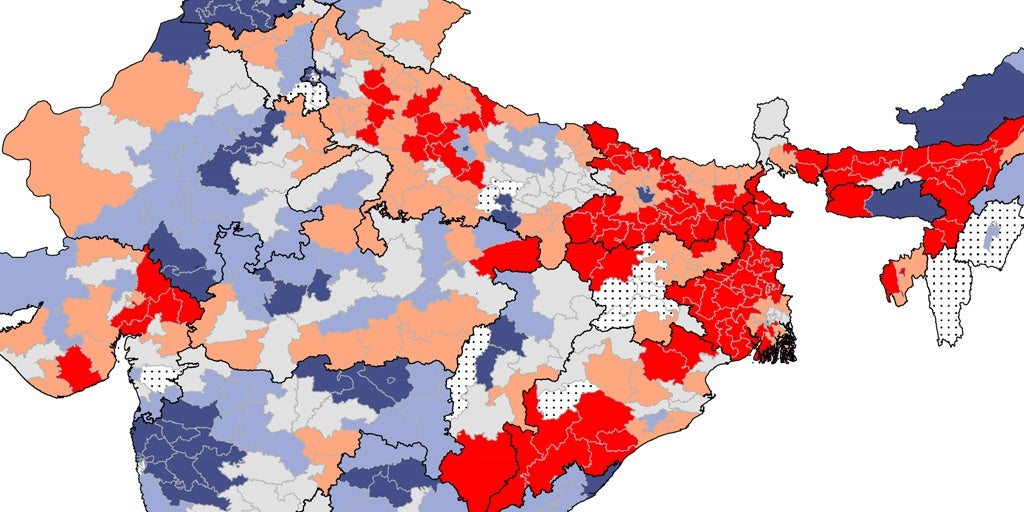A paper published in a special edition of the Harvard Data Science Review utilizes geo-mapping to identify high-risk areas for the spread of COVID-19 across the Districts and Parliamentary Constituencies of India. The researchers focus on four risk correlates including: population density percentage of population that is exposed to crowding in a household, percentage of population without access to handwashing facilities percentage of population over 65 years of age These…
Weighing the value of crowdsourced versus official COVID-19 data in India
A piece on natureindia.com written by researchers affiliated with the Harvard Pop Center — Weixing Zhang, Rockli Kim and S V Subramanian— highlights the importance of timely data on COVID-19 infection rates in order to slow the spread of the virus. Crowdsourced data, although not verified by the Indian Council of Medical Research (ICMR), has the advantage when it comes to speed, as it may be available up to two…
Continue reading “Weighing the value of crowdsourced versus official COVID-19 data in India”
Narrowing in on disparities in life expectancy across the U.S. with help of census-tract level data
A study published in PNAS is the first to look at life-expectancy data at the local, state, and county levels across the U.S. Findings reveal significant disparities at the micro level (census-tract) suggesting that analyzing life expectancy data at the typical state and county levels may not be local enough to get an accurate picture of life expectancy inequalities. “There is a need for greater precision and targeting of local…
Mothers in India who experienced neonatal death of child found to be at increased risk of additional neonatal deaths
Harvard Pop Center faculty member S (Subu) V Subramanian, PhD, and visiting scientist Rockli Kim, ScD, are among the authors of a study published in the JAMA Open Network that could help to identify high-risk pregnancies and potentially reduce the neonatal mortality rate in India. Read the Harvard T.H. Chan School of Public Health website.
Using a machine learning approach to shed light on relationship between SES and women’s height
Even though height is commonly correlated with socioeconomic status (SES), SES is not known as a reliable predictor of height. In this study, Harvard Pop Center Bell Fellow Adel Daoud, Research Associate Rockli Kim, and faculty member S (Subu) V Subramanian utilized machine learning algorithms to assess whether there were non-linear patterns in the data that might shed more light on the relationship between height and socio-economic status.
For policy change in India, it really may take a village
Researchers at the Harvard Center for Population and Development Studies (HCPDS) have been awarded a 2.2 million dollar grant by The Bill & Melinda Gates Foundation. Harvard T.H. Chan School of Public Health professor of population health and geography and HCPDS faculty member S (Subu) V Subramanian, PhD, and HCPDS research associate Rockli Kim, ScD, are principal investigators (PIs) on the three-year project that aims to provide public policy makers…
Continue reading “For policy change in India, it really may take a village”
Nutrition-specific interventions may not be best way to prevent stunting in India
Child anthropometric failures — such as stunting, underweight, and wasting — were found to be more closely linked with past and current socioeconomic conditions, such as mother’s stature, BMI and education, and household wealth and air quality, than diversity of diet, Vitamin A supplementation and breastfeeding initiation. The study by Harvard Pop Center research associate Rockli Kim, faculty member S V Subramanian, and former Bell Fellow Daniel Corsi, and their…
Continue reading “Nutrition-specific interventions may not be best way to prevent stunting in India”
Harvard Gazette: “Amid India elections, Harvard study aligns data with constituencies”
More on the “India Factsheet” project by S V Subramanian, Rockli Kim and colleagues in this piece in The Harvard Gazette…
Fact checking nutrition, health and development indicators in the Parliamentary Constituencies of India
There are 543 Parliamentary Constituencies (PCs) in India, and these political units are key to improving human capital and development. Expanding on their own recent research, Harvard Pop Center faculty member S (Subu) V Subramanian, Research Associate Rockli Kim and their colleagues have made data tables and maps available via a website to help people visualize over one hundred critical indicators of nutrition, health and development to identify PCs that…
New methods to more accurately pinpoint areas experiencing greatest burden of child malnutrition in India
Rockli Kim, ScD, and S V Subramanian, PhD, are among the authors of a study published in Social Science & Medicine that furthers recent insights on the value of focusing on parliamentary constituencies to hone in on areas experiencing the greatest burden of child malnutrition indicators. Learn more in this Harvard T.H. Chan School of Public Health news item.








